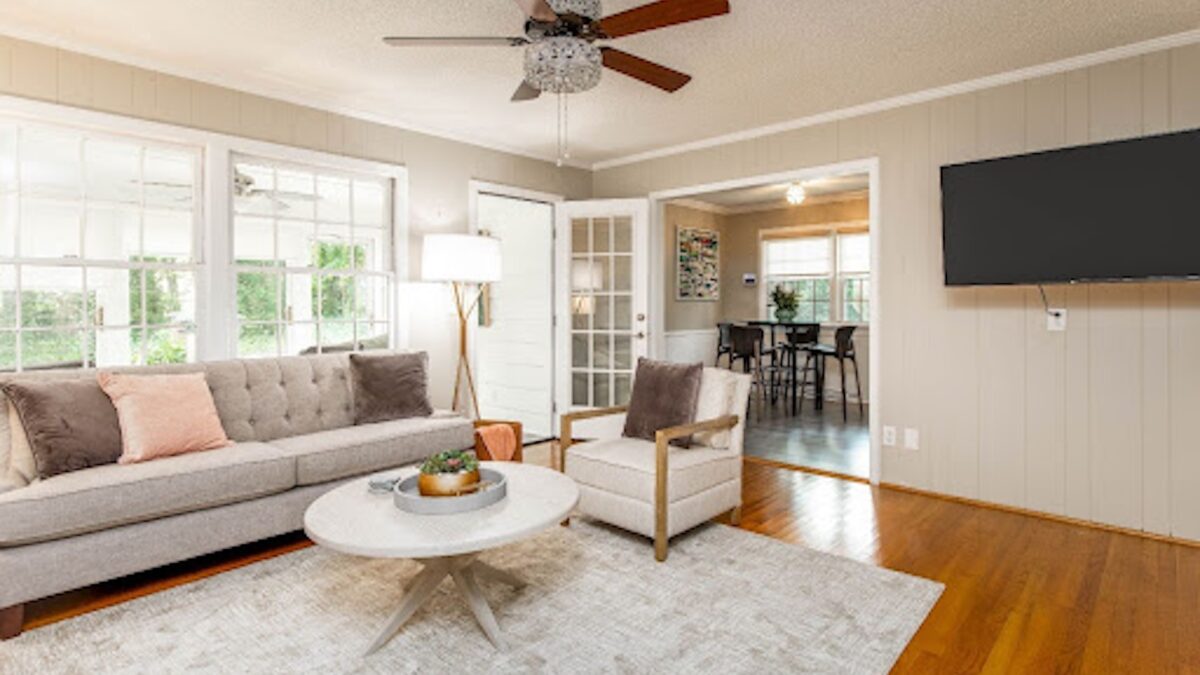By Dahna M. Chandler
No matter how often you do it, moving is a stressful, nerve-wracking experience. You have what seems like an endless list of things to accomplish in very little time, even when you’re not taking furniture and appliances with you.
“Social scientists rank moving among the top three or four most stressful life events,” says Deborah Gussoff of In Order, Inc., a certified professional organizer in Montville, New Jersey. To make moving easier, create a plan and stick to it until you’re resting comfortably on your new sofa in your new digs. “Planning in advance is the best way to make moving less stressful,” says Gussoff.
Consider Your New Home’s Living Space
Teresa James, owner of Organize and Stage Your Home in the Greater Memphis area, says, “As you’re choosing your furniture, visualize your new space organized.” Then, throughout the planning process, consider how much space you have in your new home and the location of each room. Think about who will use each room and what they will need to facilitate comfort, efficiency, and productivity.
Choose a furniture package, décor, and accessories to complement the layout and features of your new place. For example, if your new apartment has less space, then consider cutting back on total furniture and choosing smaller pieces. Unique layouts may be visually appealing, but they also have to be practical. Unusual floor plans may not work if you need wheelchair or walker accessibility, for example.
Decide which items are necessary right away and which items can go into storage. “Then, choose some pieces that do double-duty while taking up less space,” says Gussoff. Furniture with shelves, drawers, and storage inside, such as ottomans that open and coffee tables with cabinets, are good examples.
It costs money to move items to your new home, so make sure you only take what you really need. “Think about your new lifestyle, including climate and location,” says Gussoff. “Ask yourself if what you have fits into that lifestyle as you’re planning your move,” she adds. ‘If not, don’t take those items.”
Organize Your Move-Out Process in Stages
James, who works with residential and business clients, uses a three- or four-stage process with her downsizing and relocation clients. The time for each stage depends on the amount of time you’ve lived in your current location, the size of your current home, and how many belongings you have.
“The first stage is decluttering or downsizing, which you should start as soon as you know you’re moving,” she says. Doing this may also help you choose your furniture. “If you have half the space, you can take 50 percent of what you own,” she says. Make decisions carefully during this stage and be willing to purge. It gets easier as you go. “Start small in an area you don’t use often,” she adds. “Work around the perimeter of the room, and decide what you’re taking and what goes.”
Gussoff, a residential specialist, agrees, adding, “If you don’t absolutely love something, don’t pack it. Give away, sell, or purge whatever you don’t want or won’t use in your new home.” She also suggests asking, “Is it something I must own, or could I rent or borrow?”
Start Packing
Begin packing in the least used spaces, so you don’t have to worry about working around the things you still need. “Avoid frustration later by packing those things that are hardest like oversize or odd-shaped items,” says James. Label all boxes with their contents and the name of the room in the new house. “If movers allow it, leave your clothes in dresser drawers,” she says, “but pack breakables.” Get kids and elderly family members involved in packing their own spaces.
Pack an “open first” box that includes all the things you will need for the first several days in your new home. “Consider your daily routine and pack accordingly,” says Gussoff. Pack things like bed and bath linens, toilet paper, cookware, dishware, special foods, and your coffee maker if coffee is a critical part of your morning routine.
James agrees and recommends a suitcase containing enough clothes for three days, medications, glasses and/or contacts, toiletries, grooming tools, and phone and other chargers. “Do this for all family members, and consider your pets,” she says.
It’s best to transport your open first box and your suitcases in your vehicle instead of sending them with the moving company. If flying or traveling by train, check these items as baggage. You should also carry important papers, digital devices, canes, walkers, and cash for tipping movers.
Be Ready on Moving Day
Find out in advance if your movers have any restrictions for items they won’t transport. Common exclusions include food and other perishables, plants, cleaning and painting supplies, and tools or machines requiring gasoline. Board pets and find babysitters for small kids. (Put older kids to work helping.) Be entirely packed and ready when the movers arrive so you can focus on the process without scrambling to finish last minute details. Your attention to detail as they work is the best way to ensure everything is handled properly.
Furniture rental is a great way to quickly and easily set up a new home. Visit CORT Furniture Rental online or at one of more than 100 locations around the country to choose individual items or complete furniture packages for minimum fuss. Schedule your delivery for move-in day, and CORT’s team of professionals will deliver your furniture and take care of all the heavy lifting and set up. Moving into a new space has never been easier.





